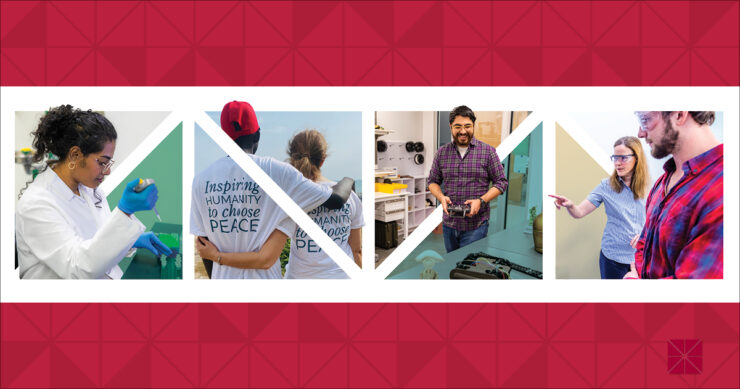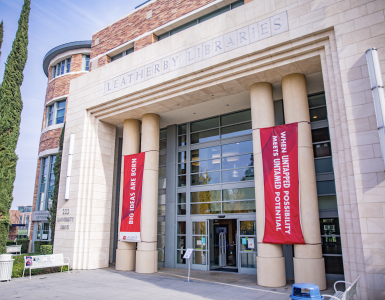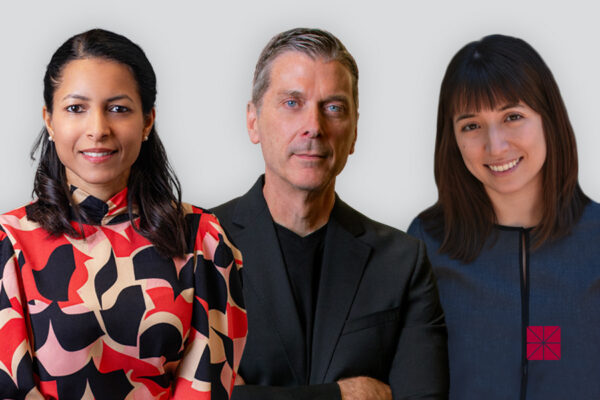At Chapman University, sometimes the pace of progress feels as fast as the pulsed lasers inside Swenson Hall of Engineering; the spirited leaps on par with those of students in the gleaming new Sandi Simon Center for Dance.
It’s no wonder, then, that as Martina Nieswandt seeks to further elevate research and creative activity at Chapman, she and her Chapman colleagues are always on their toes.
Such is life at a university on the rise.
“Our daily challenge is to provide the resources to sustain next-phase opportunities for a university that, in a relatively short time, has developed a significant research community as an R2 institution,” said Nieswandt, vice president for research at Chapman.
Nieswandt draws inspiration from the very people who soar thanks in part to the support her office provides.
“There is no saturation point,” she said of research opportunities at Chapman. “There’s unmistakeable research momentum that reflects on this dynamic collaborative community and is supported with funding in STEM fields and beyond.”
The data validate that the university’s trajectory remains on the upswing.
In the most recent fiscal year, Chapman’s federal research expenditures climbed 93%. Meanwhile, during the two decades since 2000, citations of publications by Chapman scholars have skyrocketed by more than 14,000%.
What’s more, in the latest edition of an internationally recognized research database, 24 Chapman faculty members ranked among the top 2% of researchers worldwide, based on the high volume of their citations. The figure represents a 50% increase from the previous year.
That growth is not only due to Chapman research stalwarts like Nobel Prize-winning economist Vernon Smith and National Medal of Science honoree Yakir Aharonov. Nieswandt is pleased that emerging faculty scholars also are adding fuel to the university’s advance.
She’s excited about the quality of the junior faculty joining Chapman and about the university’s commitment to “an equitable, holistic career-long research focus.”
That vision includes:
- Developmental support targeting researchers’ specific career phase so they get a leg up on next-level projects and funding.
- Mentorship from those with years and sometimes decades of research experience to help next-generation scholars step into positions of leadership.
Examples of early-career and breakthrough research success are multiplying at Chapman.
- In Chapman’s Attallah College of Educational Studies, Whitney McIntyre Miller has developed a new model for turning peace leadership theories into practical steps that global change-makers are applying in more than 40 nations.
- In the School of Pharmacy, Sun Yang is developing peptides and patented compounds with promise as targeted therapies for melanoma.
Those advances reflect another area of focus at Chapman: building partnerships with industry to expand research collaboration that leads to impact.
During the 2021-22 fiscal year, more than 80 new contracts united Chapman faculty researchers with industry innovators, driving projects to create new food-processing techniques, antimicrobial treatments and much more. From fiscal year 2020/21-2022/23 invention disclosures quadrupled at Chapman, and the number of Chapman publications increased by about 30%.
“We’re eager to establish even more collaboration, leading to partnerships that include fee-for-service contracts, graduate training and internships for our undergraduates,” Nieswandt said. “We’re seeing industry partners also benefit by having a pipeline to Chapman students as future employees. At the same time, their existing employees can add skills thanks to our graduate programs and state-of-the-art facilities.”
Inside those facilities, cutting-edge technology is making a difference across the Chapman campus in Orange as well as the university’s Rinker Health Science Campus in Irvine.
Aiding engineering research and teaching in the Optics and Photonics Lab is a new laser that emits extremely high power over an incredibly short duration – a femtosecond, or one-quadrillionth of a second. The technology opens doors to extremely precise research in fields like fiber-optic communication systems.
Elsewhere, a recent anonymous gift of $2.5 million is supporting an Innovation Hub at Dodge College of Film and Media Arts, ranked The No. 4 film school in the nation by The Hollywood Reporter and The Wrap.
“We already provide the best facilities of any film school in the country,” said Dodge College Dean Stephen Galloway. “This generous gift will help move us into an even higher realm of technological innovation.”
“Chapman is all about innovation,” added Jim Mazzo, co-chair of Chapman’s ongoing fundraising campaign Inspire: The Campaign for Chapman University. The public phase of the campaign was launched in February with the goal of raising $500 million by 2028. As of Sept. the campaign had well surpassed the halfway mark.
In 2021, Dodge College became the first film school to install an LED virtual production wall, now in high demand for teaching and student film production in the Digital Media Arts Center on campus. Students have embraced the technology because it allows them to blend the live-action and digital filmmaking worlds – a hybrid form pioneered by Disney’s “The Mandalorian.”
“There are a few moments in history when technology can reshape an art form, and this is one of those moments,” Galloway said.
At Chapman, there are also opportunities to reshape the health sciences. The Rinker Campus is well situated for success in part because of its location at the center of Orange County’s booming health science industries.
Rinker, home of Crean College of Health and Behavioral Sciences graduate programs and the School of Pharmacy, boasts:
- The oldest physician assistant program in the state and one of the oldest physical therapy programs. Students in these programs and others like speech therapy get robust hands-on training running stroke rehabilitation, aphasia support groups and real-world simulations with diverse mannequins.
- Cancer-fighting research by several faculty members, including recently patented medication and medical trials. Faculty use state-of-the-art equipment, including a $3 million machine that speeds up creation of medications.
These programs and others across the university use a multidisciplinary, collaborative approach that is a Chapman staple. One example is Fowler School of Law’s climate conference that gathered perspectives and ideas from law, art, STEM and business.
“This kind of interdisciplinary project puts Chapman on the agenda across the nation, highlighting work that impacts the life of this society and our world,” Nieswandt said.




